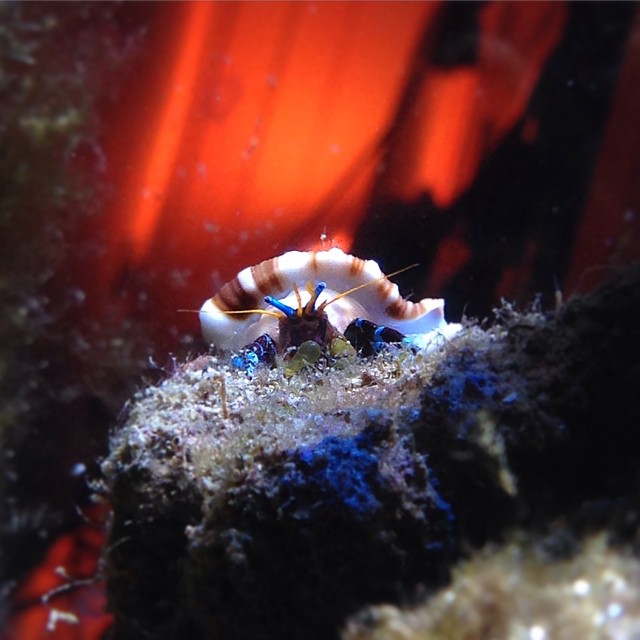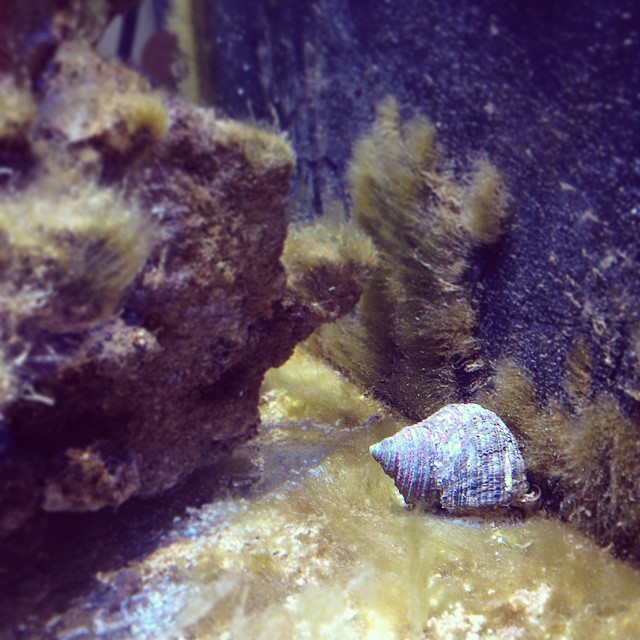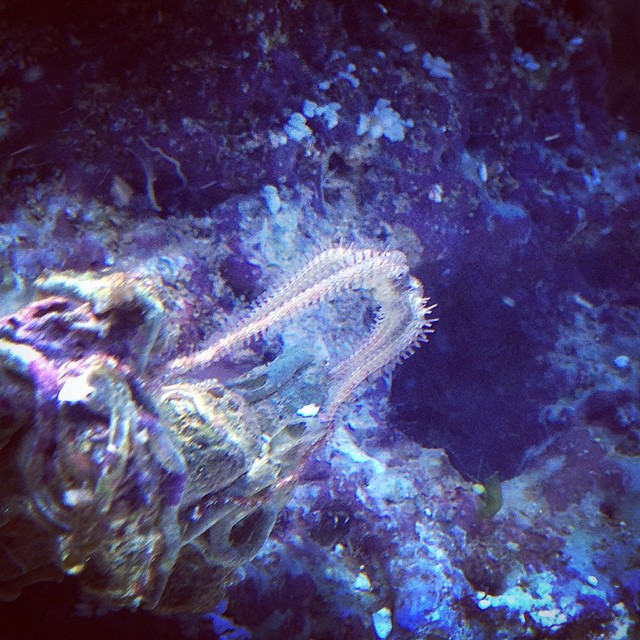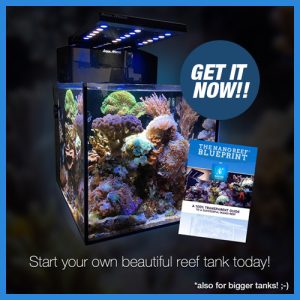During the startup or nitrogen cycle chances are your saltwater aquarium looks more like an underwater jungle instead of looking like a future nano reef. Your nitrates went up quite a bit and this has given a large boost to algae growth.
So, how to get rid of these algaes? One way is to dive into products to limit algae growth. If that is the path you want to walk, then RF-Fuel is a proven solution for that. For a start up however, you might consider the natural way. And that’s where the saltwater cleanup crew comes into play.
What is the saltwater cleanup crew ?
A saltwater cleanup crew is a natural way to clear your tank of excessive algae, to prevent it from coming back in high volumes and to get rid of detritus or any other wastes that could become a problem later on if left untouched. And well, it’s just fun to have them in your tank also.
Get the team together
A cleanup crew can consist of all kinds of critters like hermit crabs, snails, shrimps, starfish, sea urchins,… or any other algae eater. As the available room in our aquariums is mostly limited and not all of these critters are compatible, now is the time to decide who will be part of your team! Let’s take a closer look at some options that are the best fit specifically for a nano reef tank:

Hermit crabs:
putting these little guys in your tank will give you a lot of joy and “pain”. Almost always on the move, eating everything (dead) they can find, harrasing some snails or just having some adventures together… be sure to grab your camera as they will put a smile on your face with their funny looks and behaviour.
But, they can also be a real pain in the ass as they are quite known for tipping over corals or messing up parts of your scape. Their curious nature will make them inspect every inch of your tank so be prepared to get your hands dirty (or at least wet) if you have to put your corals back up for the 100th time.
In the end, they are great scavengers, so they will do a good job cleaning the tank. They will also eat longer hair algaes, which isn’t always the case with certain turbosnails.

Turbo snails:
Another good option to consider are turbo snails. A bit of an ironic name you might think, but it gets clear soon why they are called “turbo snails” after you see them going at it.
Especially the trochus snails, recognizeable by their cone shaped home, are a great addition for any nano reef. They don’t get as big as other species (like my Mexican Turbo Snail “Juan” in the picture, that was part of my cleanup crew) and they have quite the appetite.
The only downside is that they tend to eat short algae only. So in most cases they don’t touch long hair algae. That is why they can form a good pair with hermit crabs. Just be aware that the hermit crabs aren’t bothering (or even trying to eat) the snails. They are well protected, but it wouldn’t be the first time…

Brittle stars:
Along with bristle worms, not really great algae eaters. But as for getting rid of detritus, dirt and food leftovers, you will want to have some of these guys in your tank.
They can reproduce on their own and multiply in numbers very fast, so just one can get the population going in a matter of weeks or months.
That is exactly what happened in my tank, the one spawning in the picture made sure on his own I now have a population of well over 100 of these small brittle stars.
Just one warning: the olive green ones can get really large so you want the white or purple/white ones for your nano reef.
Your own winning team
As said before, there are a lot more species you could add to your cleanup crew, bigger tanks give you a lot more options like for example specific algae eating fish. But in my opinion, these above are the best way to go when it comes to nano reefs.
So how much and what should you put in your tank? Don’t listen too much to “rules” like “1 snail per gallon” or “1 crab per 4 gallons”. Try with for example 4 snails and see what it does. You see them eat algaes but the overall growth stays the same? Then add some more until you find the right balance. In the end every tank is different and you will have to decide what you prefer in your tank.
Just build it up slowly, as usual!
Feel free to leave some comments below or let me know what your cleanup crew consists of and what is your experience.
Now get going and put together your winning team!



Great article. In depth but precise. I like how you give suggestions without telling us how to do it. Trial and error is always the best, organic way of dealing with anything. That’s how we learn.
Well done again. Francis.
Thank you, Francis. Love to hear your nice comments. The organic way of dealing with anything is idd the way I prefer to go at it It is from our own experience we learn the most, so I like to point people in a direction, but don’t tell them exactly what to do so they can figure out what works best for them. Glad you noticed that, all the best!
It is from our own experience we learn the most, so I like to point people in a direction, but don’t tell them exactly what to do so they can figure out what works best for them. Glad you noticed that, all the best!
Wow! I really wish you had been around when I tried my hand at a salt water tank. It was a great experience and I loved all the beautiful fish I could put in my tank. However , I failed miserably due to not have enough knowledge. Your article is superb for a newcomer in the world of saltwater tanks. Hopefully you will do much more with this and show from the beginning how to properly set up the tank. Thanks for the article.
Gee
Thanks for your advice on the clean up crew! I will let my sister know about this as she has a big tank but not always that clean. Maybe she needs to start a clean up crew too. I really like the idea that this is a natural of cleaning instead of just dumping chemicals, which can’t be good for the fishes long term.
Appreciate your tips here!
Grace
Hey Grace, no problem, that’s what i’m here for. Initially the cleanup crew is meant to get rid of excessive algae after the startup cycle, but they are a great help in keeping the tank clean later also. It doesn’t mean you don’t have to put in the effort anymore to clean the glass or other parts of the tank of course